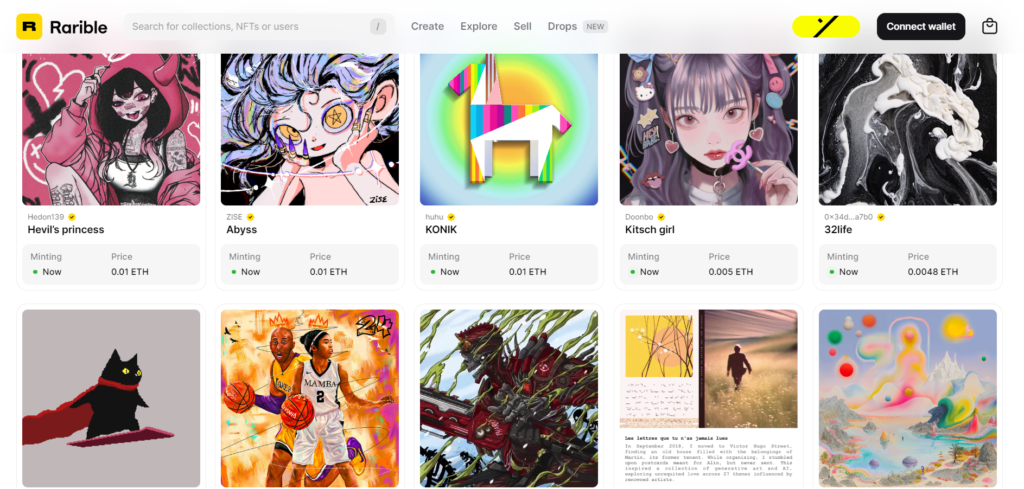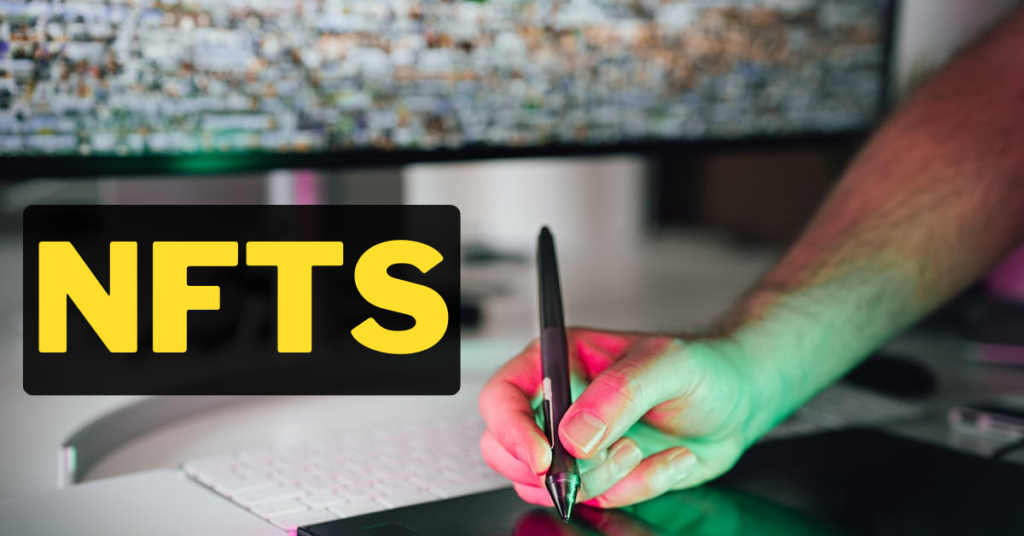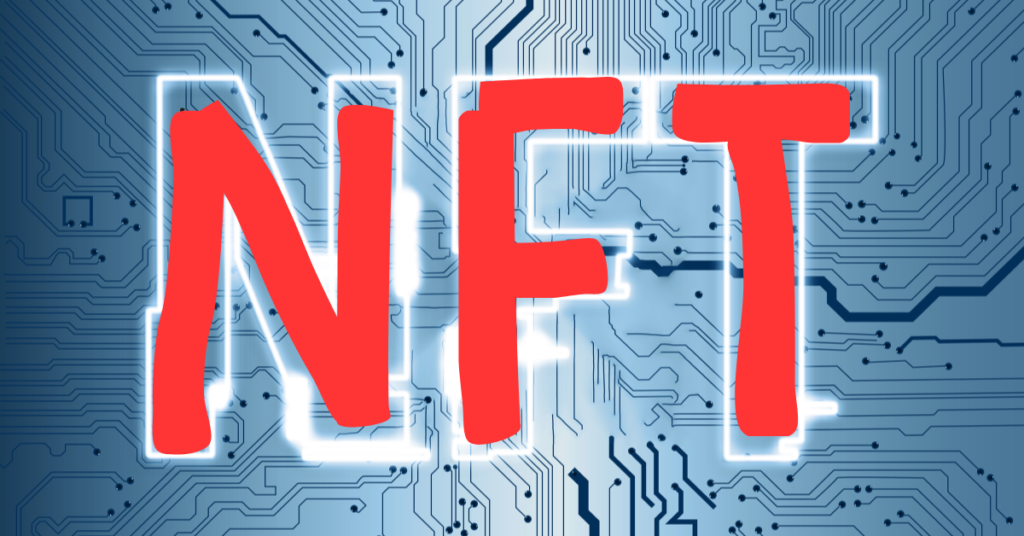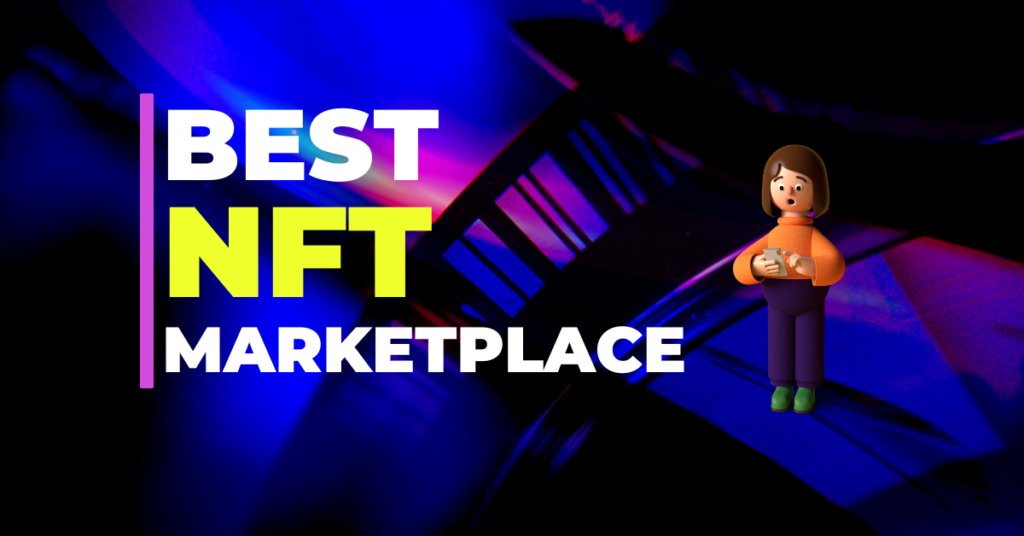Creating Non-Fungible Tokens (NFTs) has become increasingly popular, allowing artists and creators to mint and sell their digital art on the blockchain. If you’re wondering how to dive into this exciting world and learn how to create an NFT, you’ve come to the right place.
This guide will walk you through the process of creating your first NFT, from selecting the right blockchain to listing your creation for sale.
What is an NFT?
Before we dive into the creation process, it’s important to understand what an NFT is. An NFT, or Non-Fungible Token, is a unique digital asset stored on a blockchain. Unlike cryptocurrencies like Bitcoin, which are interchangeable, NFTs are unique and cannot be replicated. They often represent digital art, music, or other media.
The Concept of NFTs
Think of an NFT like a car’s vehicle identification number (VIN). The VIN is a unique identifier that is associated with your car but is not the car itself. Similarly, an NFT is a unique token linked to a digital item, like an image or video, but the token itself is what proves ownership.
Step 1: Decide What to Create

The first step in creating an NFT is deciding what digital media you want to turn into an NFT. This could be:
- Digital Art: Drawings, paintings, or other visual art forms.
- Audio: Music tracks, sound bites, or other audio files.
- Video: Short clips, animations, or video art.
Ownership and Rights
Make sure you own the rights to the digital media you plan to use. Using someone else’s work without permission could lead to legal issues.
Step 2: Choose a Blockchain

Your chosen blockchain will be where your NFT is minted and recorded. Several blockchains support NFT creation, each with its own features and costs.
Ethereum
Ethereum is the most popular blockchain for NFTs. It uses ERC-721 and ERC-1155 standards to manage NFT creation and metadata. While Ethereum is widely supported, it can have high transaction fees known as gas fees.
Solana
Solana offers lower transaction fees and faster speeds compared to Ethereum. It’s a popular choice for those looking to avoid high costs.
Flow
Flow is designed specifically for NFTs and decentralized applications, particularly popular in the sports and gaming sectors.
Step 3: Set Up an NFT Wallet
To create and store your NFT, you need a digital wallet that supports your chosen blockchain.
Popular Wallets
- MetaMask: Supports Ethereum and other blockchains; available as a mobile app or browser extension.
- Coinbase Wallet: Supports Ethereum and Solana NFTs.
- Ledger Nano X: A hardware wallet for secure storage of NFT keys.
Step 4: Choose an NFT Platform

There are several platforms where you can create, mint, and list your NFT. Here are a few popular ones:
OpenSea
OpenSea is the largest NFT marketplace, supporting Ethereum and recently Solana. It offers a comprehensive platform for creating and selling NFTs.
Solanart
Solanart is specific to the Solana blockchain, providing a user-friendly interface for minting and trading NFTs.
Crypto Exchanges
Some crypto exchanges, like Binance, also support NFT creation and offer integrated marketplaces.
Step 5: Create Your NFT
Creating an NFT is straightforward once you have chosen a platform. Here’s a step-by-step example using OpenSea:
Connect Your Wallet
Sign up on OpenSea and connect your digital wallet by verifying it in your wallet app.
Create a Collection
In OpenSea Studio, select “Create,” then “Create a new collection.” Upload your media, name your collection, and select your blockchain.
Mint the NFT
After setting up your collection, click on “Create an NFT.” Add a name, description, and upload your media. You may need to sign the transaction with your wallet and pay any associated fees.
Step 6: List Your NFT for Sale
Listing your NFT involves setting a price and choosing how long you want it to be on sale.
Platform Fees
Different platforms have varying fees. For instance, OpenSea charges a 2.5% fee on sales, while Binance has a 1% fee.
Gas Fees
Depending on the blockchain, you may encounter gas fees. Ethereum fees can be higher, whereas Solana fees are typically much lower.
Costs Associated with Creating and Selling NFTs
Minting Costs
Minting your NFT can involve several costs, including platform fees and gas fees. Some platforms have flat fees, while others charge based on the blockchain and transaction.
Selling Costs
When selling an NFT, you might incur fees such as platform commissions and gas fees, especially on Ethereum.
Is Creating an NFT Still Profitable?
While the NFT market has evolved, there are still opportunities for profit. The key is to create unique and valuable digital media that attracts collectors.
Legal Ownership of NFTs
As a creator, you retain intellectual property rights to your NFT as long as you own the underlying content. Buyers receive specific rights outlined in the purchase agreement, which may include resale rights and display permissions.
Conclusion
Creating an NFT involves understanding the minting process, choosing the right blockchain and platform, and managing associated costs. With the right approach, you can successfully create and sell NFTs in 2024.
So that’s it about this article. If you have any further questions, feel free to comment down below or contact finzerr.
Finzerr is always here to help you!
FAQs
- How do I choose the best blockchain for my NFT?
Choose based on your needs for transaction speed, cost, and marketplace support. Ethereum is popular but can be expensive, while Solana offers lower fees. - What are gas fees, and how do they affect NFT creation?
Gas fees are transaction fees on the blockchain. They can vary based on network congestion and blockchain used. - Can I create an NFT without owning the rights to the content?
No, you must own or have permission for the content you use to avoid legal issues. - What are the ongoing costs associated with owning an NFT?
Costs can include transaction fees for transfers and potential royalties if you sell the NFT. - How can I market my NFT to increase its chances of selling?
Promote your NFT through social media, online communities, and NFT platforms to attract potential buyers.



